Creative Ramblings
Is Vegan Leather Good for the Environment?
What is Vegan Leather?
In recent years, the fashion industry has been undergoing a remarkable transformation, shifting towards more sustainable and ethical practices. One of the standout innovations in this green revolution is vegan leather. But what exactly is vegan leather, and why is it gaining popularity? More importantly, “Is vegan leather good for the environment” or are we being led up an expensive garden path?
For those who opt out of real leather, there are now many alternative leather-like textiles. Materials such as apple, mushroom, pineapple, and cactus are frequently highlighted in the media and other platforms as leading innovations in this space.
However, these innovative materials have not yet been produced at a significant scale and tend to come with a higher price tag. As a result, the majority of products labelled as “vegan leather” or “plant-based leather” in the UK today are likely to be plastics like PVC or PU. Often referred to as fake or faux leather, these materials are entirely synthetic, derived from fossil fuels. The term “Vegan Leather” has been banned in Portugal, and there are calls for a similar ban throughout Europe, as many environmentalists see it as misleading.
How is Vegan Leather Made?
Vegan leather can be derived from a variety of sources, each with its unique properties and production methods. The most common materials used include:
- Polyurethane (PU): A versatile plastic polymer that can be tailored to mimic the texture and durability of real leather. PU vegan leather is flexible, easily coloured, and can be made water-resistant.
- Polyvinyl Chloride (PVC): Another type of plastic that has been used historically for vegan leather products. However, due to environmental and health concerns associated with its production and life cycle, its popularity is waning in favor of more sustainable alternatives.
- Plant-based materials: Innovations in vegan leather include materials derived from plants such as pineapple leaves (Piñatex), apple peels, cork, mushrooms (Mylo), and even kombucha tea cultures. These natural sources offer a more eco-friendly alternative to synthetic leathers, with the added benefit of utilizing agricultural by-products or renewable resources.
What You May Not Know?
The marketing of these materials often highlights their benefits over traditional leather without fully disclosing the environmental or health trade-offs involved.
This can lead consumers to believe they are making a purely positive environmental choice without understanding the full lifecycle impact of these materials. Each of these alternatives carries environmental and health implications that complicate
Polyurethane (PU) is commonly used in various industries, including fashion, furniture, and more, often as a substitute for leather and other materials. Despite its versatility and durability, there are several reasons why polyurethane can be considered harmful to the environment:
Non-Biodegradable
- Long Decomposition Time: Polyurethane is a type of plastic that does not biodegrade easily. It can remain in landfills for hundreds of years, contributing to the growing problem of plastic pollution.
Production Process
- Chemical Intensive: The production of polyurethane involves the use of toxic chemicals, including isocyanates, which can be harmful to workers’ health and the environment. These chemicals can lead to air and water pollution if not managed properly.
- Energy Consumption: Manufacturing PU is energy-intensive, contributing to carbon emissions and exacerbating climate change.
End-of-Life Issues
- Recycling Challenges: Polyurethane is difficult to recycle due to its chemical structure and the complexity of products made from it. This leads to most PU ending up in landfills or being incinerated, which can release toxic compounds into the air.
Health Risks
- Toxic Byproducts: The degradation of PU can release toxic substances into the environment, posing risks to wildlife and potentially contaminating soil and water sources.
Dependency on Fossil Fuels
- Non-Renewable Resources: Polyurethane is derived from petrochemicals, making it dependent on fossil fuels. This not only contributes to the depletion of non-renewable resources but also links PU production to the fluctuations and environmental impacts of the oil industry.
Polyvinyl Chloride (PVC) is one of the most widely used synthetic plastic polymers, found in a variety of products from plumbing and construction materials to everyday items like packaging and clothing. However, PVC poses significant environmental and health risks:
Production and Disposal Hazards
- Toxic Chemicals: The production of PVC involves the use of chlorine, which can produce dioxins and other chlorinated pollutants. Dioxins are highly toxic compounds that can persist in the environment and accumulate in the food chain, posing risks to wildlife and humans.
- Environmental Pollution: During its manufacture and disposal (especially if burned), PVC releases toxic chemicals into the air, water, and soil. These emissions contribute to air pollution, water contamination, and overall environmental degradation.
Health Risks
- Harmful Additives: PVC often requires additives such as phthalates (to make it flexible) and lead or cadmium stabilizers, which are harmful to human health. These substances can leach out of PVC products, leading to exposure through contact or ingestion.
- Carcinogenic Potential: Some of the chemicals used in PVC production, as well as those released during its incineration, are known or suspected carcinogens.
Non-Biodegradable
- Longevity in the Environment: Like many plastics, PVC is non-biodegradable. It can persist in the environment for decades, contributing to the growing problem of plastic pollution in oceans, rivers, and landscapes.
Recycling Challenges
- Difficult to Recycle: PVC recycling is challenging due to the presence of harmful additives and the diversity of PVC formulations, which make it hard to process. As a result, a significant amount of PVC waste ends up in landfills or is incinerated, leading to further environmental contamination.
Dependency on Fossil Fuels
- Derived from Petrochemicals: The production of PVC relies on petrochemicals, linking it to the extraction and consumption of fossil fuels. This contributes to resource depletion and the environmental impacts associated with the fossil fuel industry.
While plant-based vegan leather represents a significant step forward in terms of animal welfare and reducing the use of petroleum-based plastics, it’s important to acknowledge that these materials also have environmental drawbacks. Here are some reasons why plant-based vegan leather might be considered less than perfect from an environmental perspective:
Resource Intensive Crops
Some plant-based leathers are made from crops that require substantial resources to grow, such as water, land, and pesticides. For example, the production of materials derived from corn or soy could contribute to these issues if not managed sustainably.
Use of Chemicals in Processing
Turning plant materials into durable, leather-like textiles often involves chemical processing. The extent and type of chemicals used can vary, but the process may involve solvents and adhesives that can be harmful to the environment if they’re not managed responsibly.
Durability Concerns
Some types of plant-based leathers may not be as durable as traditional leather or certain synthetic alternatives. This could lead to products wearing out more quickly and needing to be replaced more often, which, in turn, contributes to higher consumption and potentially more waste.
Energy Consumption
The production of plant-based vegan leathers can be energy-intensive, especially for those materials that require extensive processing to achieve the desired texture and durability. The environmental impact of this energy use depends on the source of the energy and how efficiently it’s used.
Biodegradability and Recycling Issues
Although plant-based materials are often touted for their biodegradability, the reality is more complex. Once processed into leather-like materials, their ability to biodegrade can be significantly reduced, especially if synthetic chemicals or polymers are used in the process. Additionally, recycling these materials can be challenging due to their composite nature.
Agricultural Impact
The demand for crops used in making plant-based vegan leather can contribute to agricultural practices that have their own environmental consequences, such as deforestation, loss of biodiversity, and soil degradation, especially if not sourced from sustainable farming practices.
Is Vegan Leather Sustainable?
Vegan leather, especially when sourced from plant-based materials, generally has a lower environmental footprint than traditional leather. It requires less water, energy, and chemicals to produce, and it avoids the methane emissions associated with livestock farming.
Firstly lets look at Pineapple leather, known commercially as Piñatex, which utilizes pineapple leaves—a by product of pineapple farming. The fibres from these leaves are fused using various polymers to create a textile.
In some instances, the bonding agent is mainly plastic, while in others, it’s polylactic acid, a material that can compost under industrial conditions. However, given the present capabilities for sorting and recycling waste from footwear, clothing, and accessories, it’s highly improbable that items made with Piñatex will be properly processed for composting.
As a result, these products are likely to end up in landfill sites, where they contribute to non biodegradable waste.
The same can be said for Apple leather which involves using waste apple fibers, which are bonded to a plastic material to ensure the product’s stability. Consequently, the final product comprises about 50-75% plastic.
Similarly Cactus leather, branded as Desserto, faces a similar challenge. Cactus fibres alone lack the essential structure and durability for manufacturing products. Like Piñatex and apple leather, these fibres must be bonded with a plastic material. Desserto products are made up of 65% polyurethane.
Using waste materials to create new textiles is a great idea for sustainability. But, there’s a problem when a lot of plastic is needed to make these textiles strong enough for use. Many of these eco-friendly alternatives have to be mixed with plastic to make them durable.
This creates a conflict because while using waste reduces the damaging impact on the environment, adding plastic, which comes from fossil fuels, is in turn bad for the environment. Finding the right balance between using waste and avoiding too much plastic is a key challenge in making truly sustainable textiles.
Mushroom Leather is actually Sustainable
Mushroom leather, an innovative material in the realm of vegan leathers, is derived from mycelium, the root structure of mushrooms. This material is gaining attention for its sustainability and ethical production method. Here’s a closer look at mushroom leather and its characteristics:
- Cultivation: Mycelium is cultivated in controlled conditions, feeding on organic matter such as sawdust or agricultural by-products. This process can take just a few weeks, making it a rapid and efficient way to produce raw material.
- Harvesting: Once the mycelium has grown to a sufficient density, it is harvested.
- Processing: The harvested mycelium is then processed, often involving compression and drying, to achieve the desired leather-like texture. Natural dyes can be used to color the material, and it may be treated to enhance durability and water resistance.
- Finishing: Finally, the material is cut and finished according to its intended use, ready to be made into products.
- Sustainability: Mushroom leather is considered highly sustainable due to its reliance on renewable resources and a production process that requires minimal water and energy compared to traditional animal leather or synthetic alternatives.
- Biodegradability: One of the most significant advantages of mushroom leather is its biodegradability. Since it’s made from natural fibres, it can decompose under the right conditions, reducing waste and environmental impact.
- Durability and Aesthetics: While not identical to animal leather, mushroom leather offers a comparable level of durability and aesthetic appeal, making it suitable for a wide range of applications including footwear, apparel, and accessories.
- Customization: The processing of mushroom leather allows for a degree of customization in terms of texture, thickness, and flexibility, enabling designers to experiment with various styles and functionalities.
Although mushroom leather is a promising alternative to traditional and synthetic leathers, its presence in the market is still growing. Brands and designers interested in sustainable materials are increasingly exploring its potential, but widespread adoption may take time as production scales up to meet demand.
In conclusion, mushroom leather represents an exciting development in sustainable fashion and materials science. With its environmentally friendly production process and versatile applications, it holds promise for reducing the fashion industry’s ecological footprint while offering consumers ethical alternatives.
Portuguese Cork is a Vegan Alternative
Portuguese vegan cork is emerging as a superior sustainable alternative in the fashion industry, especially when compared to synthetic, plastic-based vegan leathers.
Extracted from the bark of cork oak trees, primarily found in Portugal, cork fabric offers a unique combination of environmental benefits and practical attributes that make it ideal for clothing, bags, jewellery, and more. Here’s why Portuguese vegan cork stands out:
Sustainable Harvesting
- Renewable: Cork oak trees are not cut down to harvest cork; instead, the bark is carefully stripped away in a process that actually promotes tree health and growth. The bark regenerates over time, making cork a highly renewable resource.
- Carbon Sequestration: Cork oak forests play a significant role in carbon sequestration. They absorb carbon dioxide from the atmosphere, helping to mitigate climate change. The harvesting process does not harm this ability; thus, cork production is beneficial for the environment.
Eco-Friendly Production
- Low Environmental Impact: The production of cork fabric has a minimal environmental footprint. It requires less water and energy compared to conventional leather and synthetic alternatives. Additionally, the process is free from the toxic chemicals typically used in tanning and synthetic materials production.
- Biodegradable: Unlike plastic-based vegan leathers, cork is completely natural and biodegradable. At the end of its lifecycle, cork can break down without leaving harmful residues in the environment.
Practical and Aesthetic Qualities
- Durability: Cork fabric is lightweight yet remarkably durable and resilient, making it suitable for everyday use in fashion items like bags and shoes.
- Water Resistance: Naturally water-resistant, cork fabric protects against spills and rain, adding to its practicality for various applications.
- Unique Texture: Cork brings a distinctive look and feel that adds aesthetic value to fashion items. Its natural pattern is unique to each piece, offering an organic beauty that synthetic materials cannot replicate.
Shop Vegan Cork
Discover the exquisite vegan cork collection by Bluebell Lane Designs, offering stylish and sustainable accessories for the conscious consumer.
Ethical Considerations
The cork industry is vital for local economies in Portugal, providing sustainable livelihoods for farmers and workers involved in the harvesting and production process.
In conclusion, Portuguese vegan cork represents a forward-thinking choice for the fashion industry, offering a blend of sustainability, functionality, and aesthetic appeal that far surpasses plastic-ridden vegan leather alternatives.
Its adoption not only supports environmental goals but also promotes ethical practices, making it a compelling material for conscious consumers and designers alike.

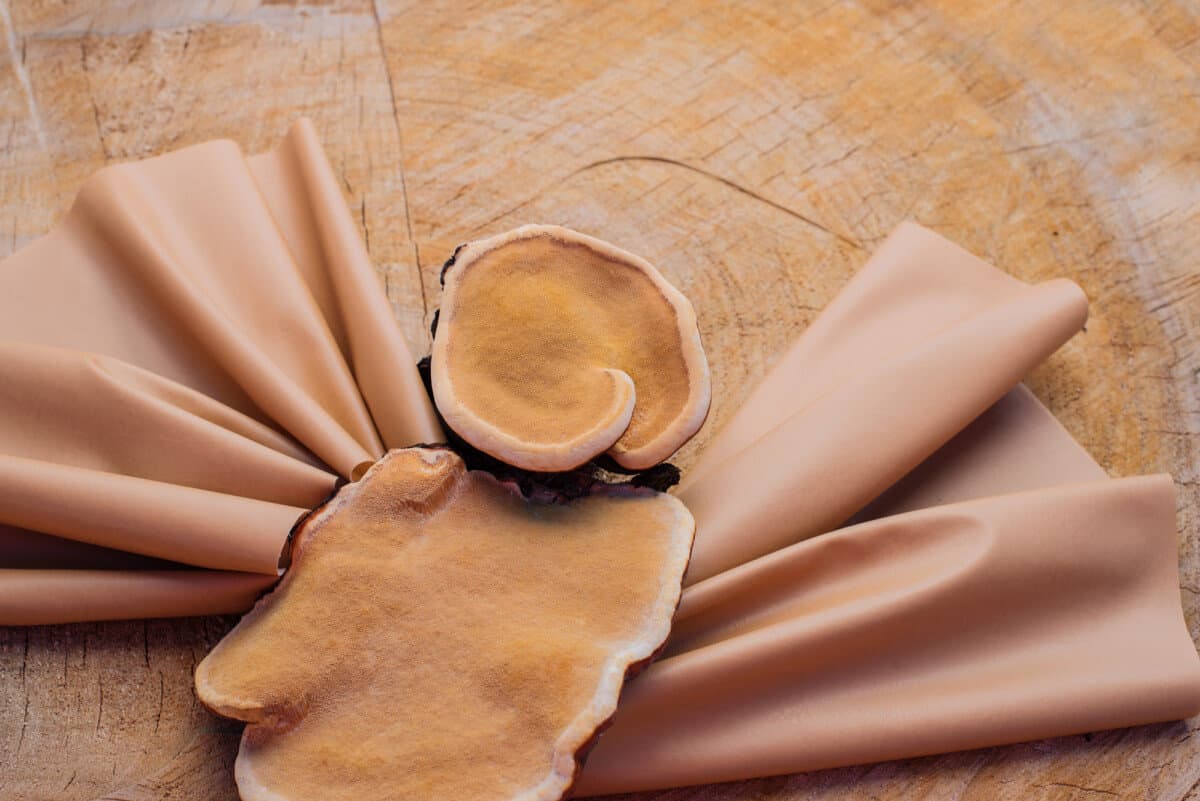
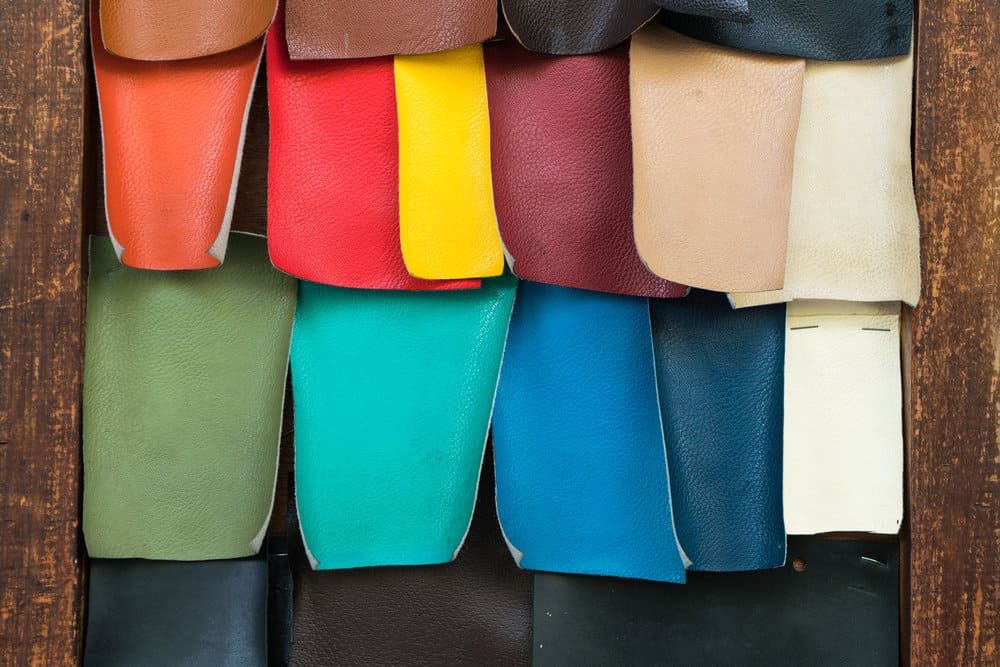
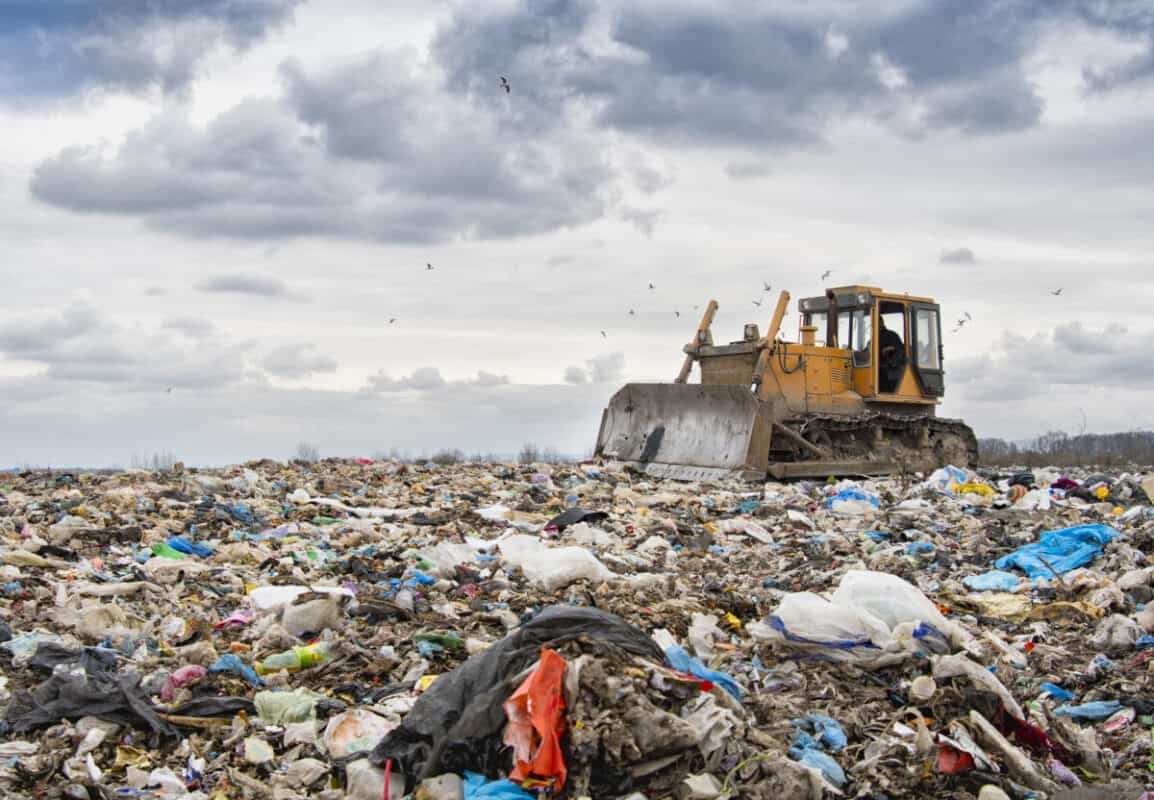
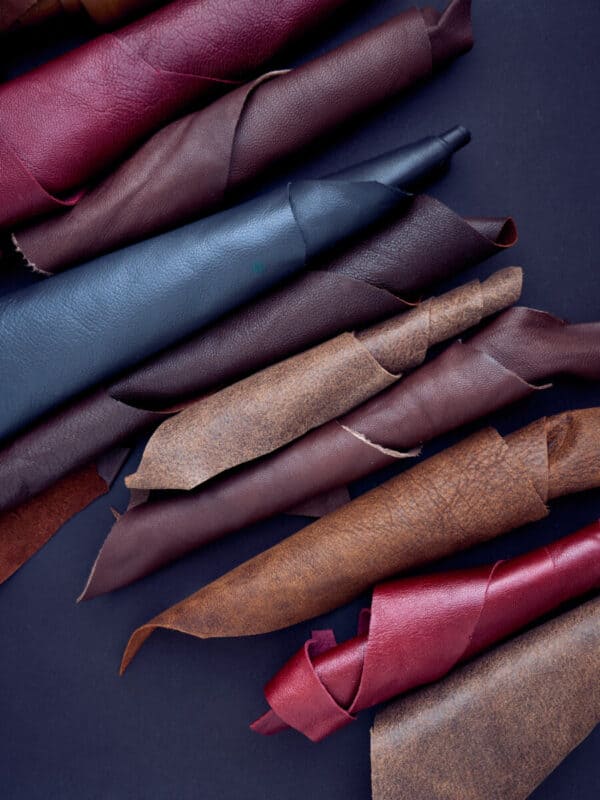
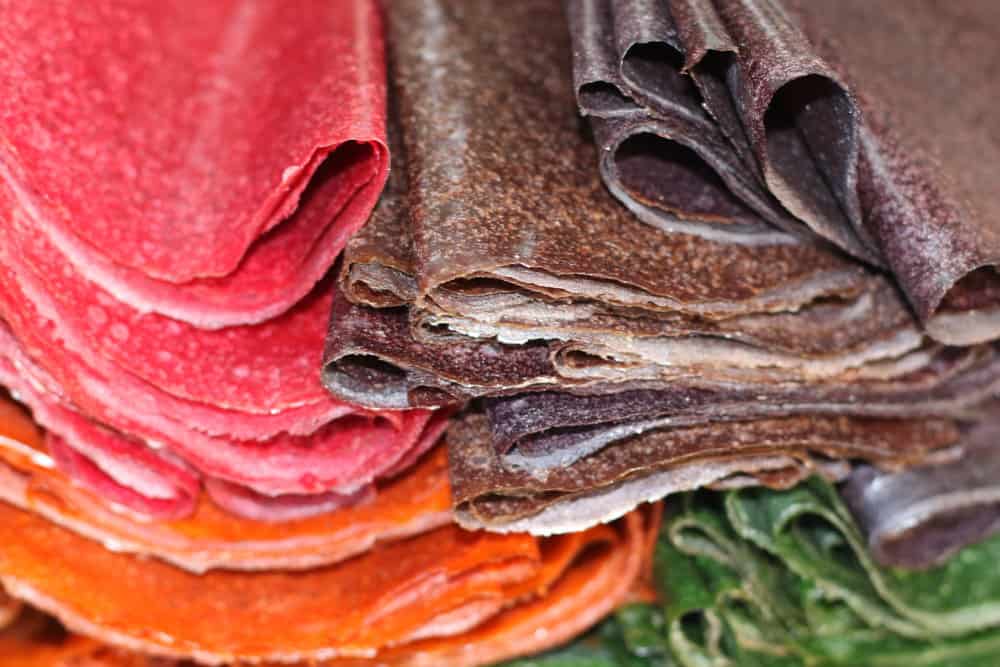

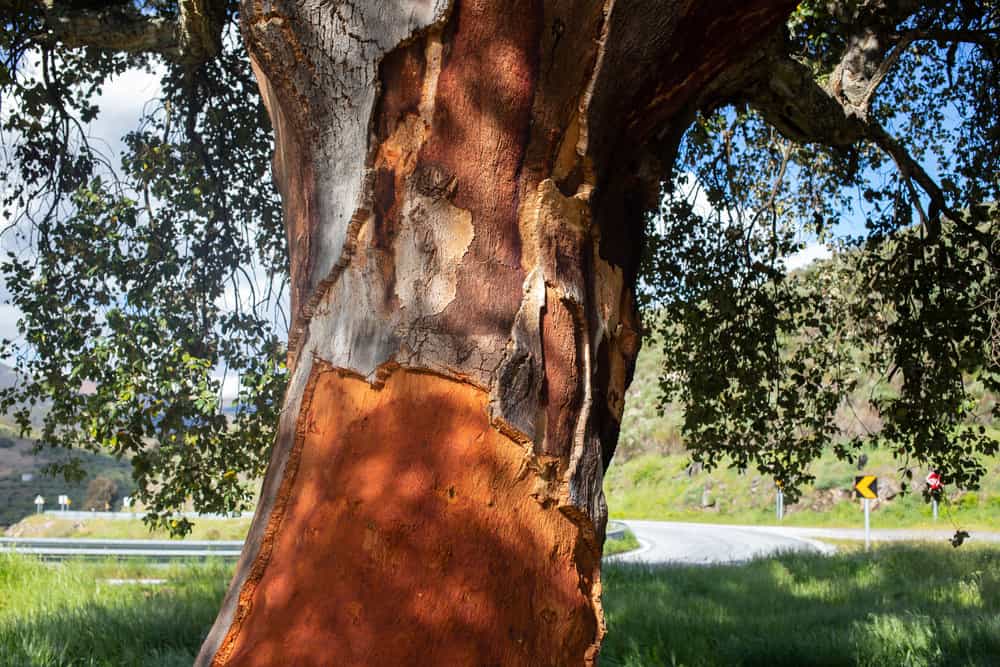
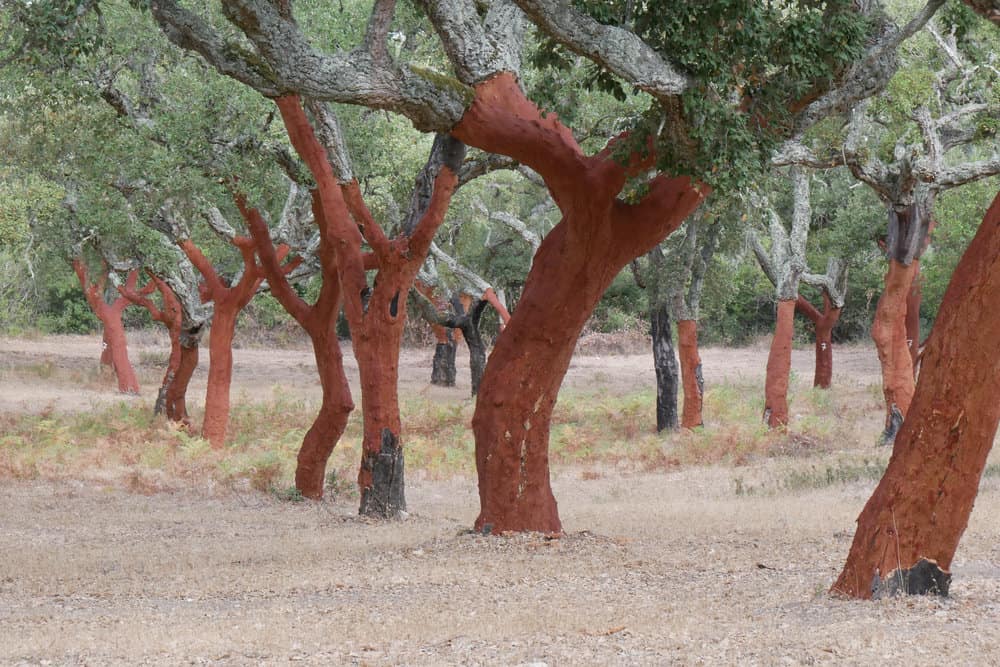
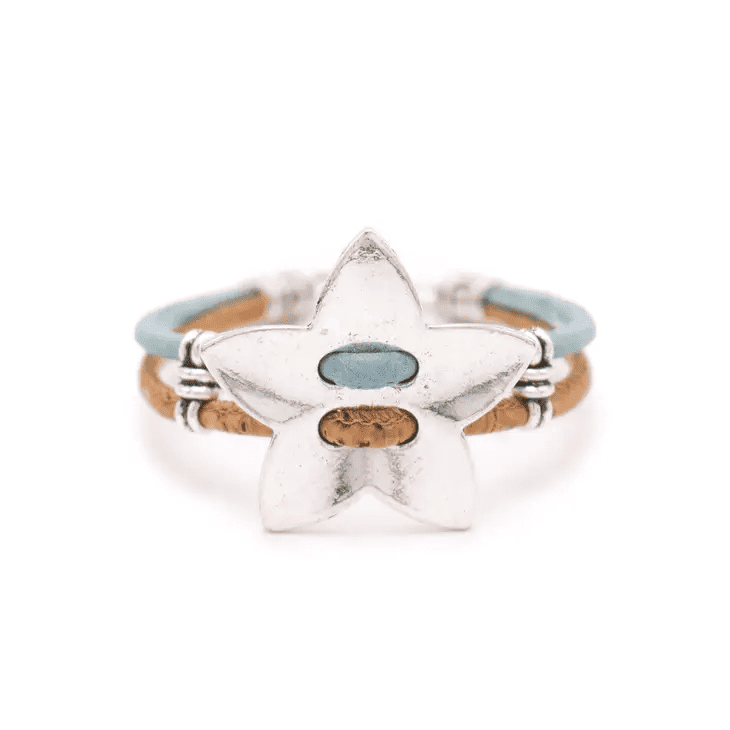
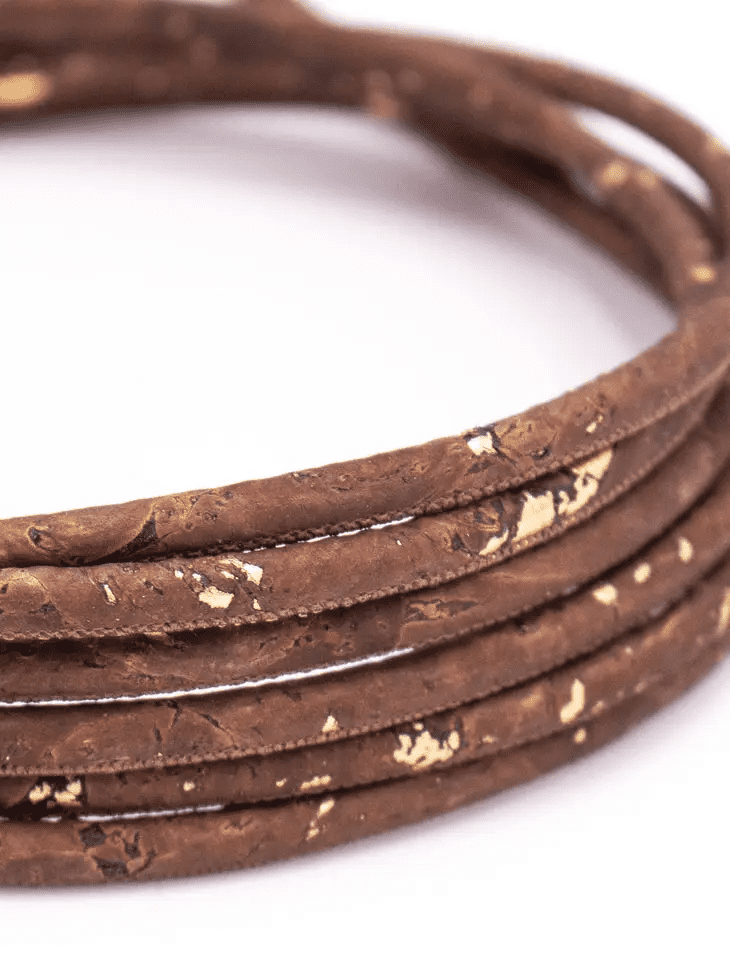
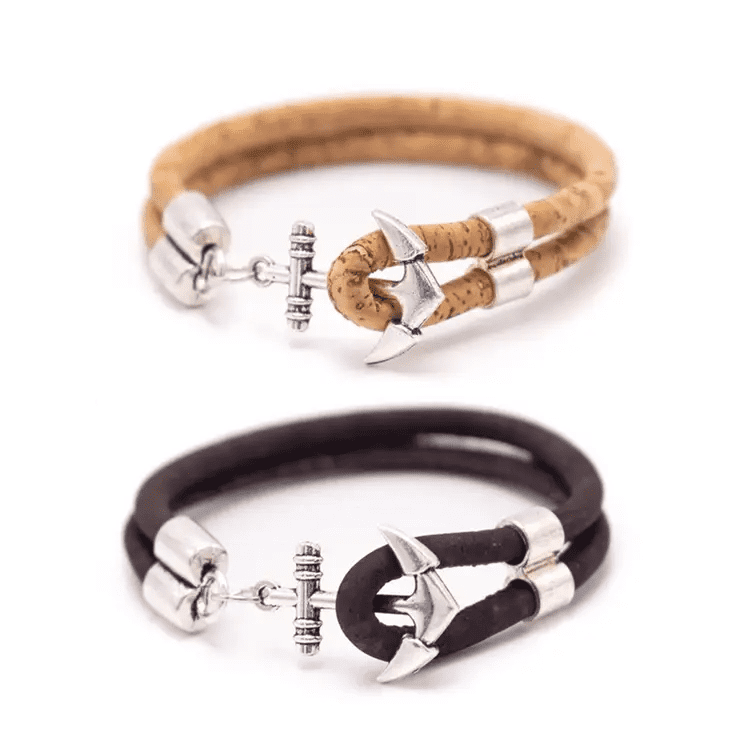
From reading your post, it seems to me that Cork and Mushroom are the only good choice, and are a benefit for both vegans and environmentalists alike.
I personally believe, buyers should be made aware of the use of plastics in the other forms of vegan leather.
I am seeing vegan Cork jewellery pop up more now than a few years back and the jewellery that Bluebell Lane Designs makes just looks absolutely incredible. May have to think about treating myself xx